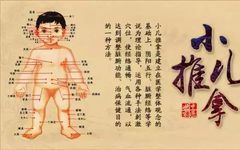Pediatric Tuina involves applying techniques to children, stimulating acupuncture points and meridians, regulating qi, yin and yang, and the essence, spirit, and vitality. This approach activates and mobilizes the child’s body to improve internal conditions through natural means rather than medication, achieving a balance between the organs and harmony with nature.
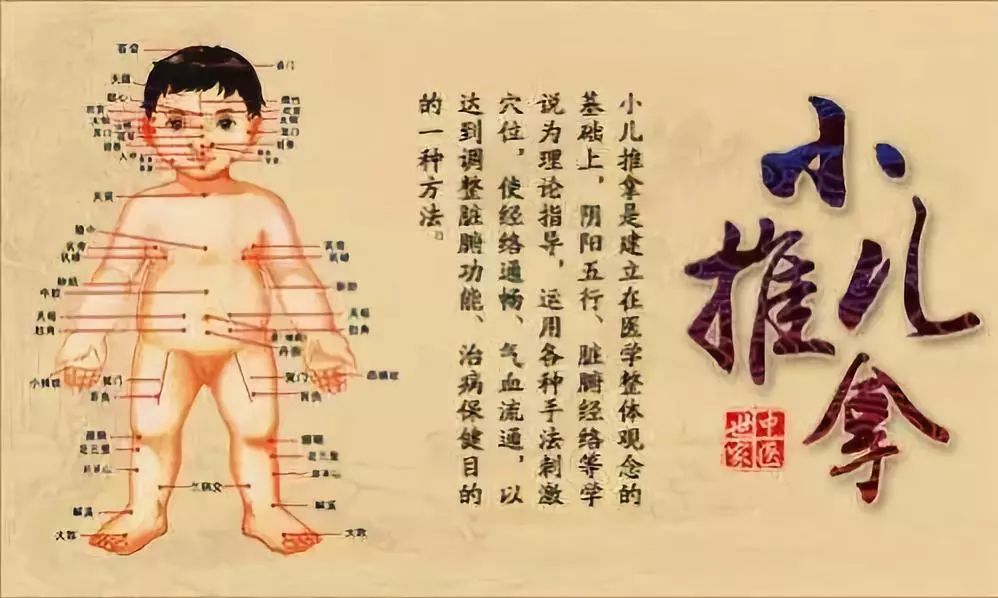
1. Bu Pi Jing (Tonifying the Spleen Meridian), commonly used for digestive system diseases, also nourishes the lungs after respiratory infections, promoting the generation of metal from earth.
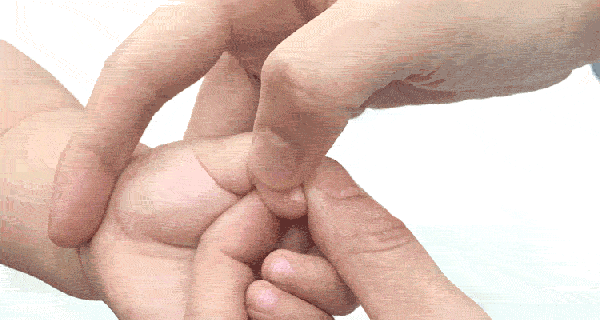
2. Shun Yun Ba Gua (Following the Eight Trigrams), applicable for both spleen-stomach and respiratory system diseases.
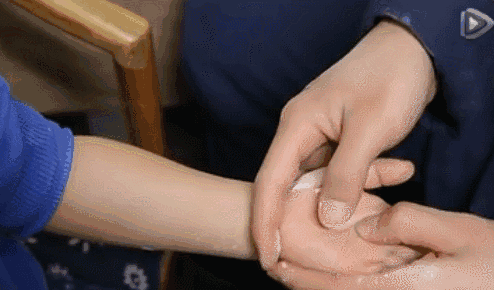
3. Qia Wu Zhi Jie (Pinching the Five Finger Joints), a common technique used after a child is frightened.
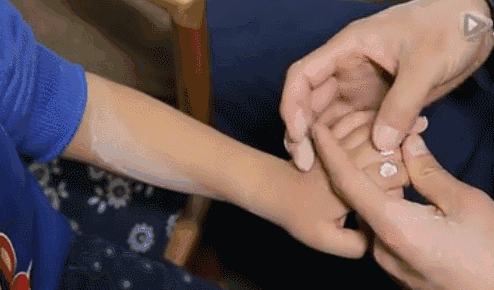
4. Rou Yong Quan (Kneading the Yongquan Point), used for headaches, fever, vomiting, and diarrhea, tonifying kidney qi.
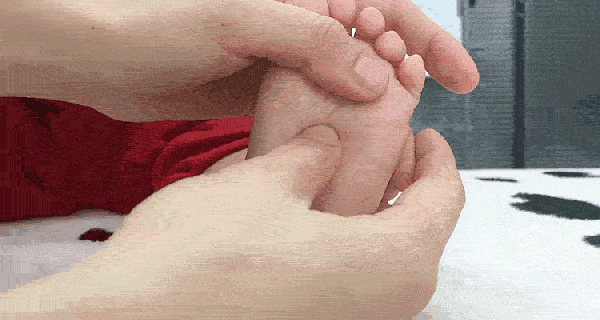
5. Dao Xiao Tian Xin (Pounding the Little Heart), used for clearing heat and calming fright, applicable for convulsions, irritability, and restlessness.
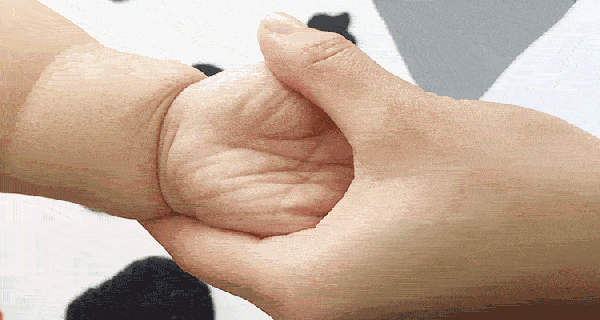
6. Ping Gan Qing Fei (Calming the Liver and Clearing the Lungs), used for respiratory external pathogens.
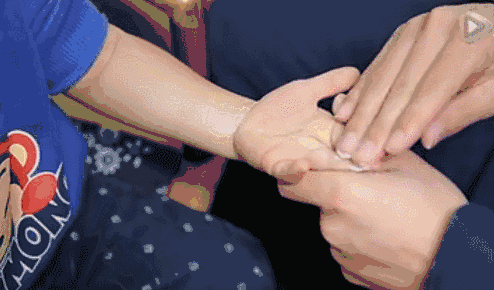
7. Shun Shizhen Mo Fu (Clockwise Abdominal Massage), used for constipation, food stagnation, and internal heat.
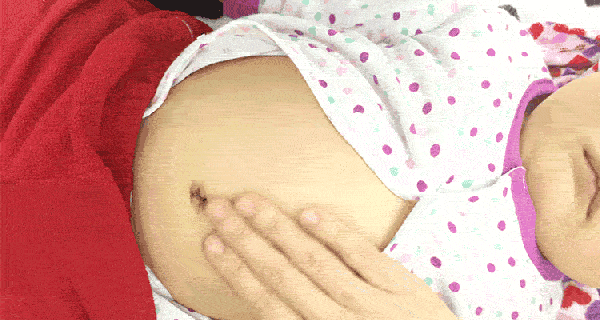
8. Na Feng Chi (Grabbing the Wind Pool), used for colds, sweating, headaches, and fever.
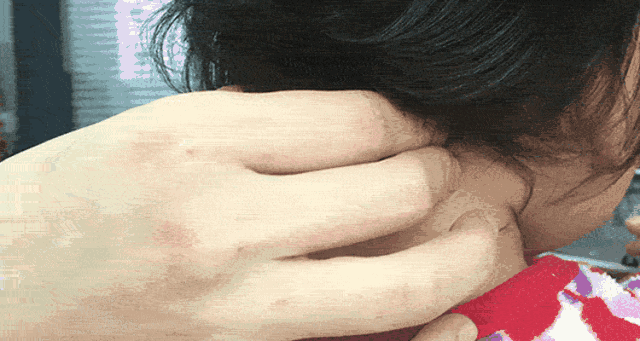
9. Tui Liu Fu (Pushing the Six Fu Organs), used for high fever, cooling blood, and detoxifying.
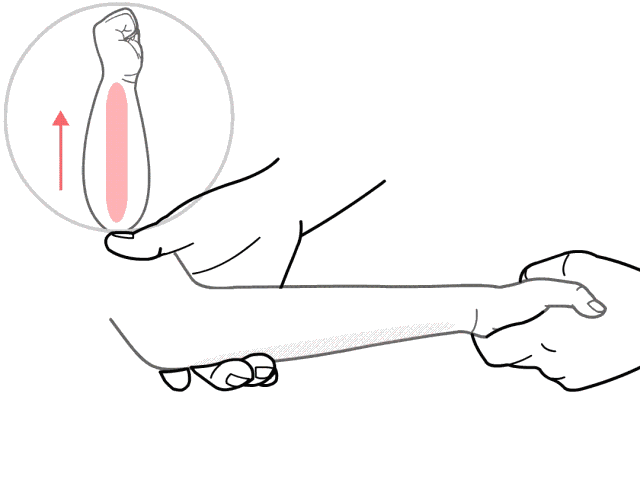
10. Nie Ji Da Zhui (Pinching the Great Vertebra), used for colds and fever.
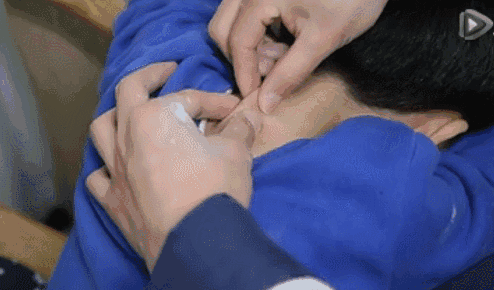
11. Fen Shou Yin Yang (Separating Yin and Yang of the Hands), used to regulate the balance of yin and yang, for mixed cold and heat, and persistent high fever.
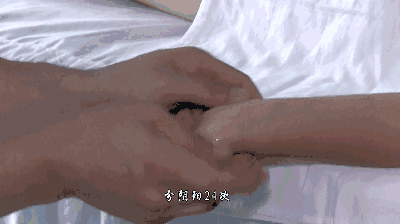
12. Qing Da Chang (Clearing the Large Intestine), used for constipation and food stagnation.
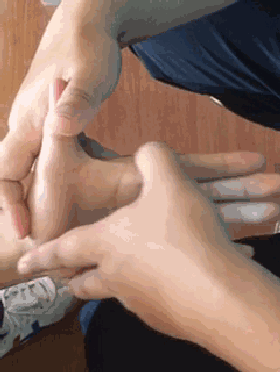
13. Qia Si Feng Xue (Pinching the Four Seams), used for anorexia and food stagnation.
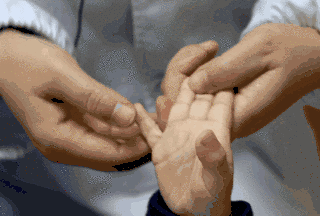
14. Rou Fei Yu (Kneading the Lung Shu Point), used for pneumonia and cough.
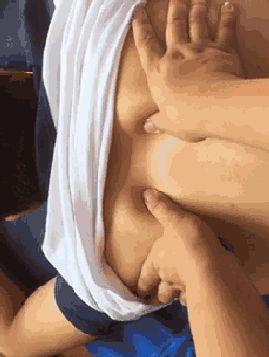
15. Xia Tui Qi Jie Gu (Pushing Down the Seven Vertebrae), used for constipation and food stagnation.
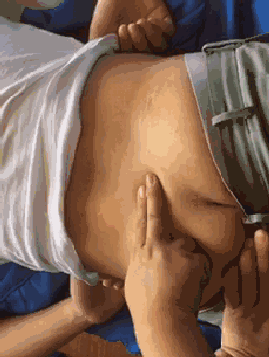
16. Na Jian Jing (Grabbing the Shoulder Well), used for colds and fright.
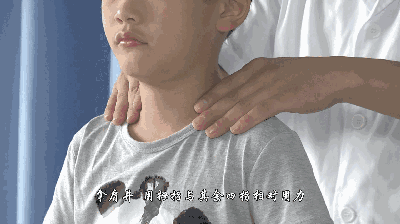
17. Fen Fu Yin Yang (Separating the Abdominal Yin and Yang), used for diarrhea, food stagnation, and constipation.
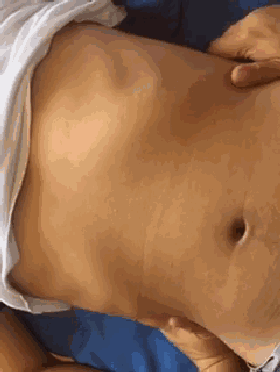
18. Heng Ca Si Heng Wen (Horizontal Rubbing of the Four Horizontal Lines), used for dry cough, light cough, or cough at the onset or recovery stage.
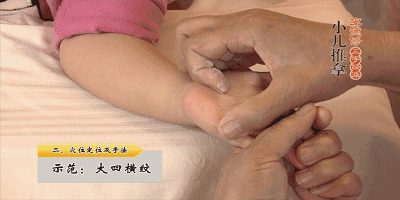
19. Rou Ban Men (Kneading the Banmen Point), Banmen is the gate of the spleen and stomach, can open the Sanjiao, clear both empty and full heat, and treat vomiting and diarrhea, and abdominal pain.
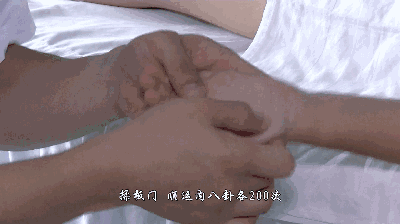
20. Rou Zu San Li (Kneading the Zusanli Point), used for spleen and stomach diseases, often kneading Zusanli is more effective than eating chicken soup, as Zusanli is a health point for the spleen and stomach.
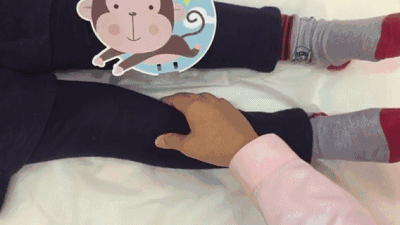
21. Qing Tian He Shui (Clearing the River of Heaven), used for low fever and heat in the heart.
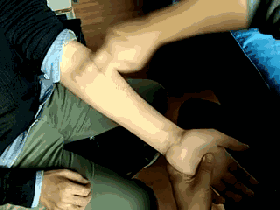
Pediatric Tuina in TCM: No Worries for Everyday Ailments!
When a baby shows signs of discomfort, parents need not worry. Simple pediatric Tuina techniques can alleviate the discomfort. Below, I will recommend some easy-to-operate pediatric Tuina techniques! Parents, hurry and learn!
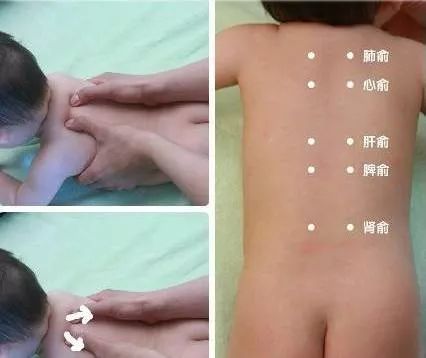
【Fei Yu】 (Lung Shu Point)
[Location] Below the spinous process of the 3rd thoracic vertebra (between the 3rd and 4th thoracic vertebrae), 1.5 inches lateral, belonging to the Foot Taiyang Bladder Meridian.
[Technique] Use both thumbs or the index and middle fingers to knead both sides of the Fei Yu point, known as kneading the Fei Yu; use both thumbs to push down from the inner edges of the scapula downwards 100 times, known as separating and pushing the Fei Yu, or separating and pushing the scapula.
[Function] Benefits the lungs, regulates qi, stops cough, and resolves phlegm.
[Indications] Fever, cough, and all respiratory diseases.
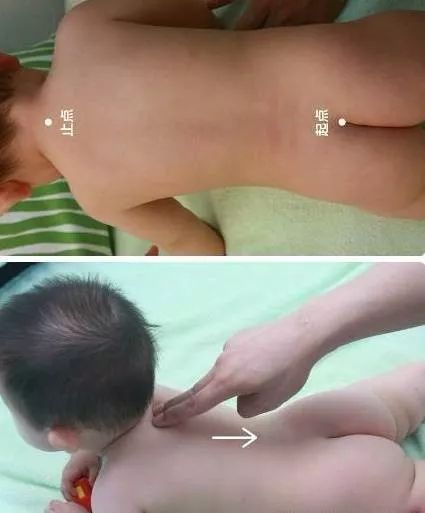
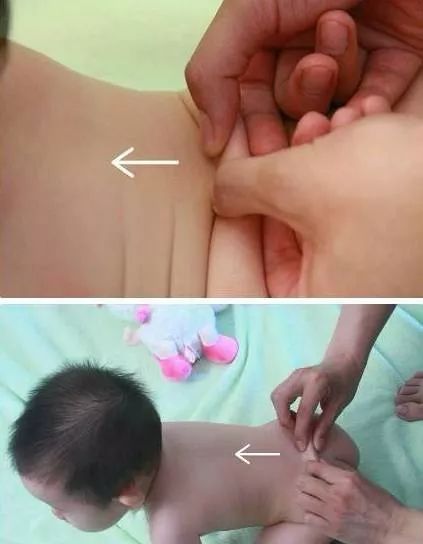
【Ji Zhu】 (Spine)
[Location] A straight line from Dazhui to Changqiang.
[Technique] Push straight down from top to bottom, known as pushing the spine; use pinching from bottom to top, known as pinching the spine. Pinch 3-5 times, and after every 3 pinches, lift the skin of the back once, known as the three pinches and one lift method.
[Function] Regulates yin and yang, qi and blood, harmonizes the organs, opens the meridians, and cultivates original qi, strengthening the body.
[Indications] Fever, fright, night crying, malnutrition, diarrhea, vomiting, abdominal pain, constipation, etc.
【Tian Shu】 (Tianshu Point)
[Location] 2 inches (about one finger) beside the navel, one on each side.
[Technique] Use the index and middle fingers to press on both sides of the Tianshu point, gently kneading 50-100 times.
[Function] Tianshu is the mu point of the large intestine, which can guide the large intestine and regulate qi to eliminate stagnation. Commonly used clinically to treat digestive system diseases.
[Indications] Diarrhea, abdominal distension, abdominal pain, constipation, and digestive dysfunction.
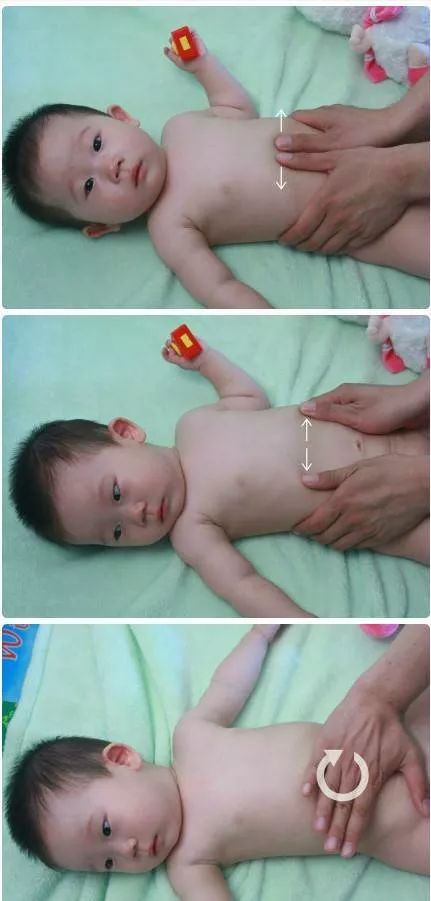
【Fu Yin Yang】 (Abdominal Yin and Yang)
[Alias] Abdomen.
[Location] In the soft flesh below the Zhongwan point and the two sides of the ribs.
[Technique] Push along the edge of the rib arch or from Zhongwan to the navel, pushing to both sides, known as separating the abdominal yin and yang; rubbing with the palm or four fingers is called rubbing the abdomen.
[Function] Strengthens the spleen and stomach, regulates qi, and aids digestion.
[Indications] Abdominal pain, abdominal distension, borborygmi, etc. Clockwise abdominal massage can relieve constipation, while counterclockwise can stop diarrhea.
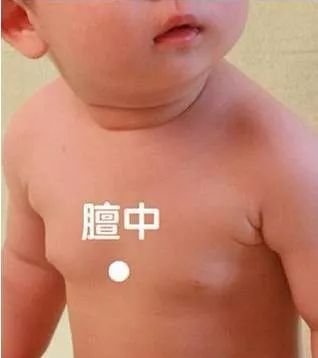
【Dan Zhong】 (Danzhong Point)
[Location] In the center of the line connecting the two nipples on the sternum, belonging to the Ren Meridian.
[Technique] Knead with the tip of the middle finger, known as kneading Danzhong; use both thumbs to push from the point to the sides towards the nipples, known as separating Danzhong.
[Function] Danzhong is the meeting point of qi, located in the chest, kneading it can open the chest, regulate qi, stop cough, and resolve phlegm.
[Indications] Chest tightness, vomiting, qi counterflow, cough, and phlegm sounds caused by various reasons.
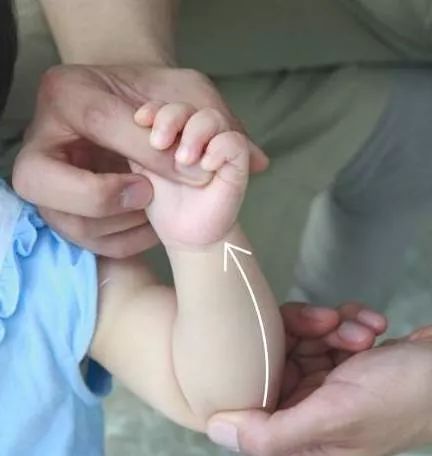
【Tui Liu Fu】 (Retreating the Six Fu Organs)
[Location] On the ulnar side of the forearm, a straight line from the elbow joint to the wrist transverse line.
[Technique] Use the thumb or index and middle fingers to push from the elbow towards the wrist, known as retreating the six Fu organs or pushing the six Fu organs.
[Function] Clears heat, cools blood, and detoxifies.
[Indications] All heat syndromes, high fever, thirst, fright, sore throat, oral thrush (white spots on the tongue resembling a goose’s mouth), mumps, and dry stools.
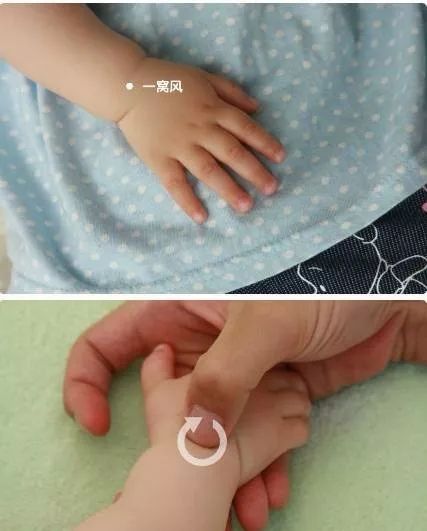
【Yi Wo Feng】 (External One Wo Wind)
[Location] On the back of the wrist, in the center of the wrist transverse line.
[Technique] Knead with the fingertips, known as kneading Yi Wo Feng.
[Function] Kneading Yi Wo Feng can warm the middle, move qi, stop pain, and benefit the joints.
[Indications] All abdominal pain, colds, joint pain, and acute or chronic fright.
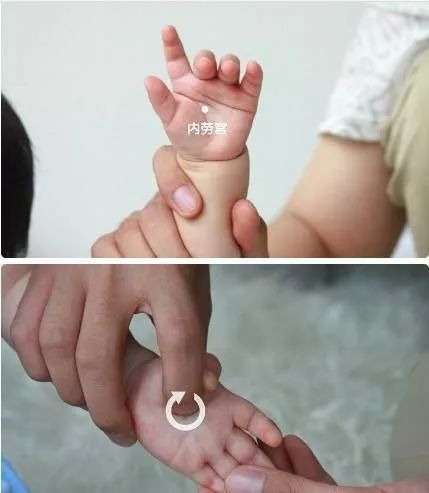
【Nei Lao Gong】 (Labor Palace)
[Location] In the center of the palm, at the point where the middle and ring fingers point when making a fist.
[Technique] Knead with the middle finger, known as kneading Lao Gong. Knead 100-200 times.
[Function] Kneading the left side induces sweating, while the right side drains heart fire and alleviates irritability.
[Indications] Fever, thirst, mouth sores, gum erosion, and internal heat.
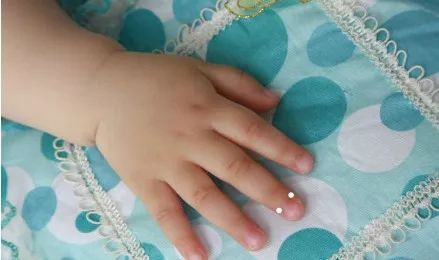
【Duan Zheng】 (Correcting the Position)
[Location] On both sides of the base of the middle finger nail, the radial side is called left Duan Zheng, and the ulnar side is called right Duan Zheng.
[Technique] Pinch with the thumb nail or knead with the thumb pad, known as pinching or kneading Duan Zheng.
[Function] Pinching the right Duan Zheng treats vomiting and nosebleeds; pinching the left Duan Zheng has a lifting effect, mainly used for watery diarrhea and dysentery.
[Indications] Nosebleeds, fright, vomiting, diarrhea, and dysentery.
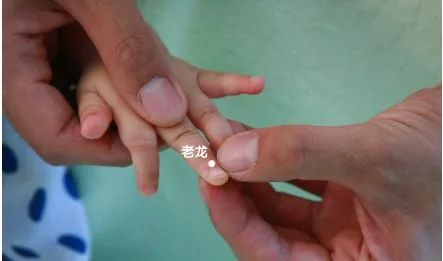
【Lao Long】 (Old Dragon)
[Location] One inch below the center of the middle finger nail.
[Technique] Pinch with the thumb nail, known as pinching Lao Long.
[Function] Opens the orifices and awakens the spirit, reduces fever.
[Indications] Sudden fainting, exhaustion, qi closure, heart fire, and excess heat.
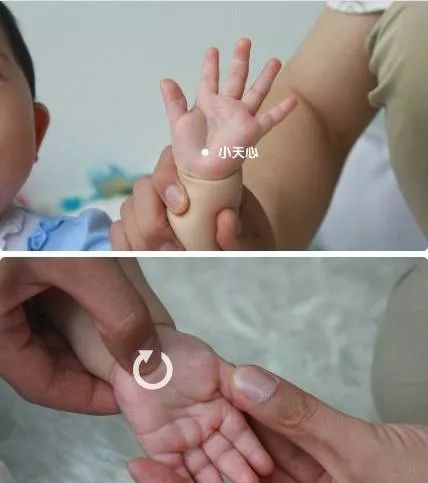
【Xiao Tian Xin】 (Little Heart)
[Alias] Fish Joint Intersection.
[Location] In the depression at the junction of the large and small fish joints.
[Technique] Knead with the fingertip, known as kneading Xiao Tian Xin; pinch with the thumb nail, known as pinching Xiao Tian Xin; pound with the tip of the middle finger or the bent joint of the finger, known as pounding Xiao Tian Xin.
[Function] Kneading can clear heat and calm fright, promote urination, and improve vision; pinching and pounding can calm the spirit and settle fright.
[Indications] Fright, convulsions, irritability, night crying, red and painful urination, red and swollen eyes, and unexpressed rashes.
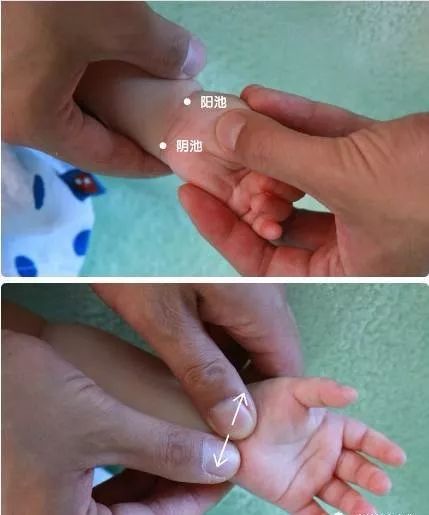
【Shou Yin Yang】 (Hand Yin and Yang)
[Location] On the wrist transverse line on the palm side. The radial side (thumb side) is Yang Chi, and the ulnar side (little finger side) is Yin Chi.
[Technique] Both thumbs push from the center of the wrist transverse line (Zongjin point) to the sides, known as separating the Great Horizontal Line, also known as separating the hands’ yin and yang.
[Function] Balances yin and yang, harmonizes qi and blood, and promotes digestion.
[Indications] Alternating cold and heat, abdominal distension, diarrhea, vomiting, food accumulation, and irritability.
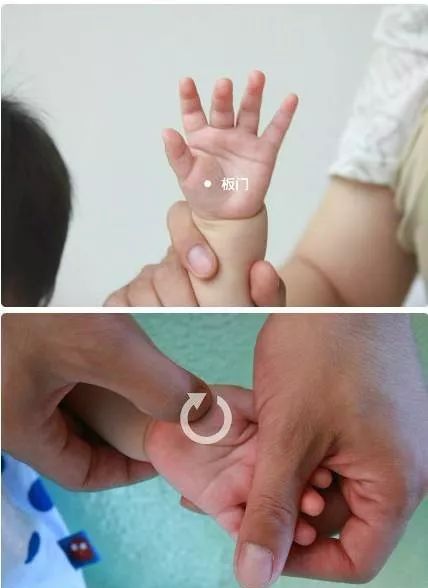
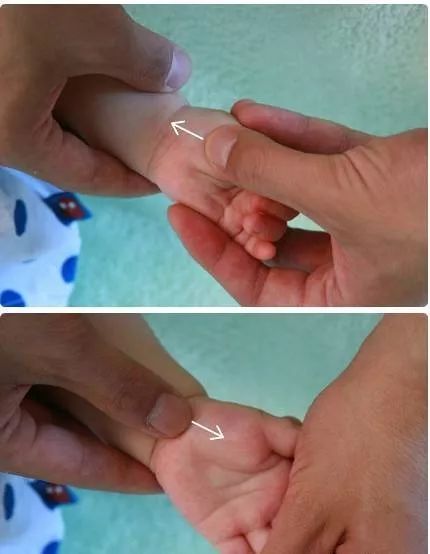
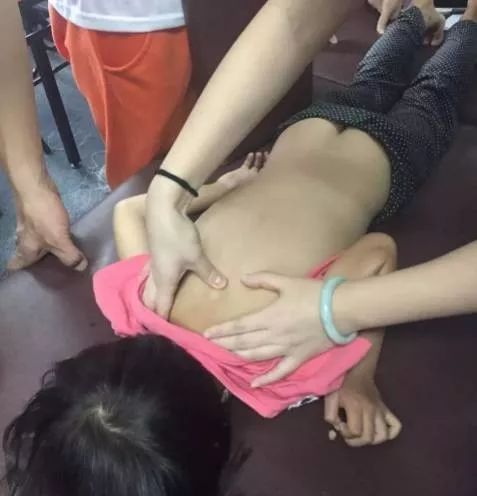
【Ban Men】 (Banmen Point)
[Location] On the palm surface at the level of the large fish joint.
[Technique] Knead the Banmen point with the thumb, known as kneading Banmen, can be done clockwise or counterclockwise. Pushing from the wrist transverse line towards the base of the thumb is called pushing the horizontal line towards Banmen, which can stop vomiting. Conversely, pushing from Banmen towards the horizontal line can stop diarrhea.
[Function] Strengthens the spleen and stomach, aids digestion, and resolves stagnation. Treats food stagnation, poor appetite.
[Indications] Food accumulation, abdominal distension, poor appetite, vomiting, diarrhea, and warm qi.
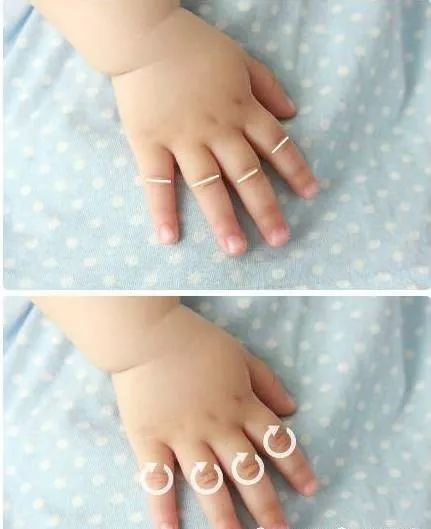
【Wu Zhi Jie】 (Five Finger Joints)
[Location] On the back of the hand, at the first interphalangeal joint of the five fingers.
[Technique] Pinch with the thumb nail, known as pinching the five finger joints, pinch 5-20 times; knead with the thumb and index finger, known as kneading the five finger joints, knead 100-200 times.
[Function] Pinching or kneading the five finger joints can calm the spirit, dispel wind and phlegm, and open the orifices; pinching the five finger joints is mainly used for irritability.
[Indications] Fright, restlessness, convulsions, cough with phlegm, abdominal pain, etc.
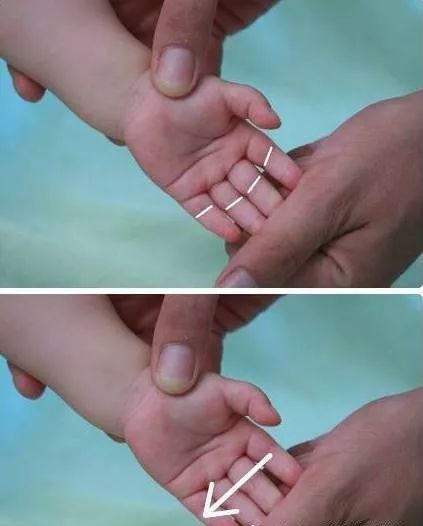
【Si Heng Wen】 (Four Horizontal Lines)
[Location] On the palm surface, at the horizontal lines of the first interphalangeal joints of the index, middle, ring, and little fingers.
[Technique] The child brings the four fingers together, pushing from the index horizontal line towards the little finger horizontal line, known as pushing the four horizontal lines. Pinching with the thumb nail is called pinching the four horizontal lines.
[Function] Reduces fever and irritability, disperses stagnation, and harmonizes qi and blood. Treats abdominal distension, malnutrition, and lack of appetite.
[Indications] Abdominal distension, malnutrition, and digestive disorders.
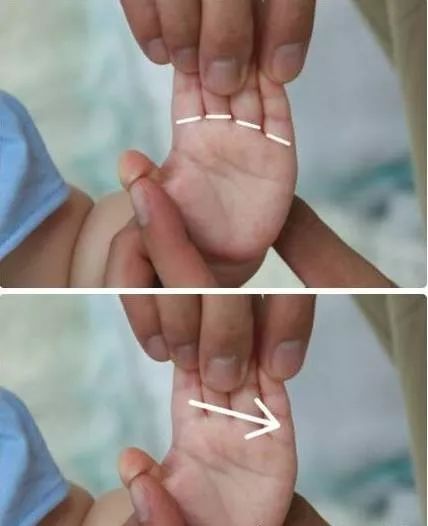
【Xiao Heng Wen】 (Small Horizontal Lines)
[Location] At the horizontal lines of the index, middle, ring, and little fingers on the palm surface.
[Technique] Pinch with the thumb nail, known as pinching the small horizontal lines; push with the thumb side, known as pushing the small horizontal lines.
[Function] Opens the chest, disperses stagnation, and resolves phlegm.
[Indications] Bronchitis, whooping cough, pneumonia, and all respiratory diseases.
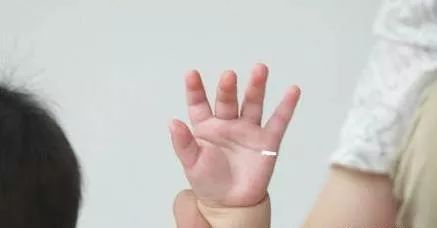
【Zhang Xiao Heng Wen】 (Palm Small Horizontal Lines)
[Location] Below the little finger root on the ulnar side of the palm.
[Technique] Knead with the middle or index finger, known as kneading the palm small horizontal lines.
[Times] 100-500 times.
[Function] Clears heat, disperses stagnation, and resolves phlegm and cough.
[Indications] Commonly used for phlegm-heat cough, mouth and tongue sores, sudden cough, and excessive salivation, effective for severe salivation in infants.
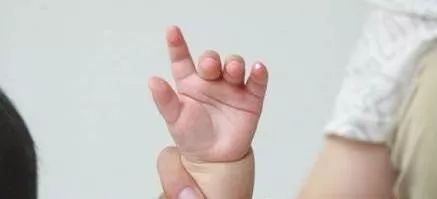
【Shen Ding】 (Kidney Top)
[Location] At the tip of the little finger.
[Technique] Knead with the middle or thumb tip, known as kneading the kidney top.
[Function] Kneading the kidney top can consolidate kidney qi and stop sweating.
[Indications] Spontaneous sweating or night sweats, and cranial closure (whether the fontanelle is open or closed).
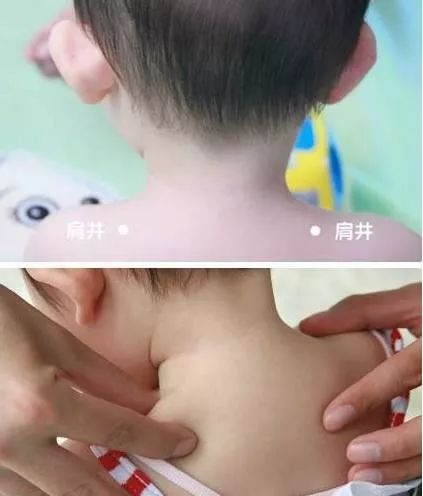
【Jian Jing】 (Shoulder Well)
[Location] At the midpoint of the line connecting Dazhui and the acromion, in the shoulder muscle area, belonging to the Foot Shaoyang Gallbladder Meridian.
[Technique] Use the thumb and index and middle fingers symmetrically to lift the Jian Jing, known as lifting Jian Jing, generally lifting 5 times; press on Jian Jing with the fingertip, known as pressing Jian Jing, generally pressing for two minutes.
[Function] Induces sweating, releases the exterior, and tonifies qi and blood.
[Indications] Colds, fainting, and limited upper limb movement.
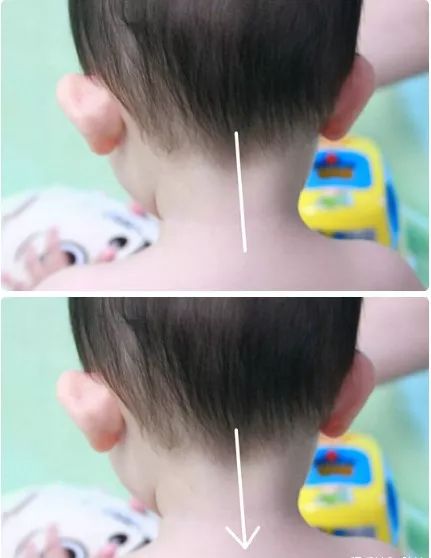
【Tian Zhu Gu】 (Heaven Pillar Bone)
[Location] A straight line from the hairline at the back of the neck to the Dazhui point.
[Technique] Use the thumb or index and middle fingers to push straight down, known as pushing Tian Zhu; or scrape from top to bottom with a spoon dipped in water.
[Function] Stops nausea, dispels wind, and scatters cold.
[Indications] Nausea, stiff neck, fever, fright, and sore throat.
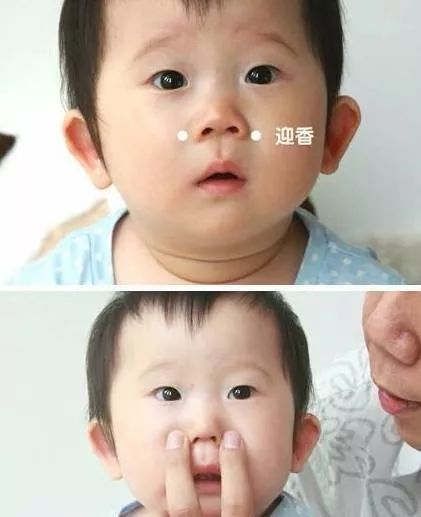
【Ying Xiang】 (Welcome Fragrance)
[Location] 5 fen beside the nostrils, in the nasolabial groove.
[Technique] Knead with the index and middle fingers, known as kneading Ying Xiang.
[Function] When the nose is blocked and unable to smell, pressing it can open the nasal passages, allowing for the perception of scents, hence the name Welcome Fragrance.
[Indications] Nasal congestion and runny nose.
Doctors remind that if the little one shows any signs of discomfort, such as fever, cough, fatigue, or other symptoms of suspected infection, they should seek medical attention promptly to prevent the condition from worsening.
Editor: Hong Yan
Reviewer: Wang Jialiang – Acupuncture and Tuina Department

